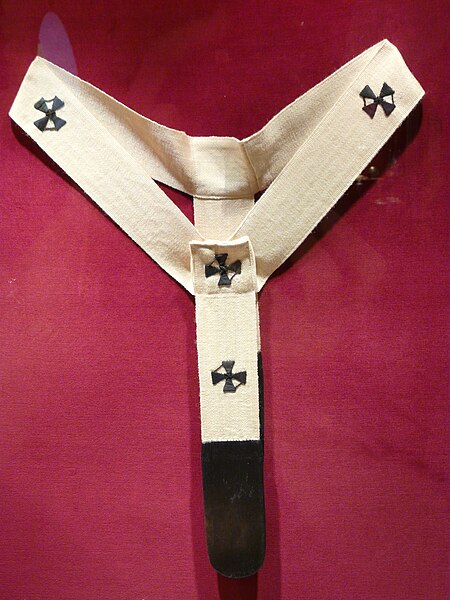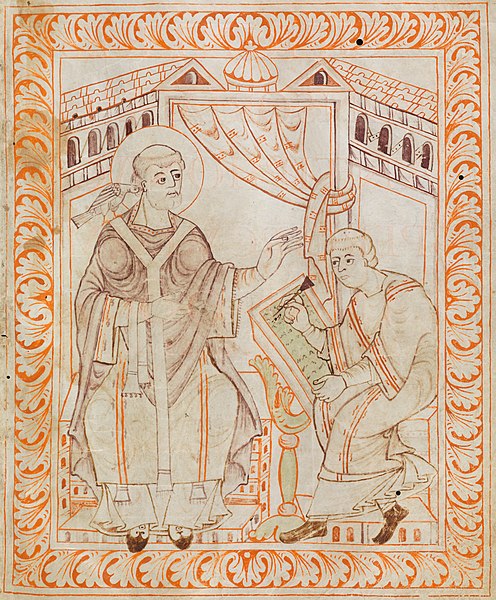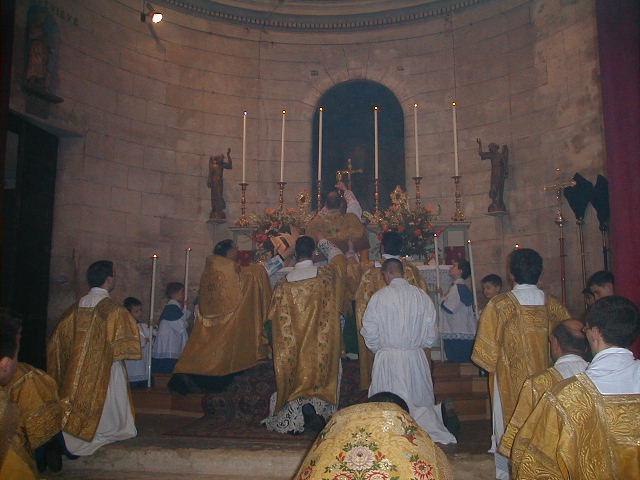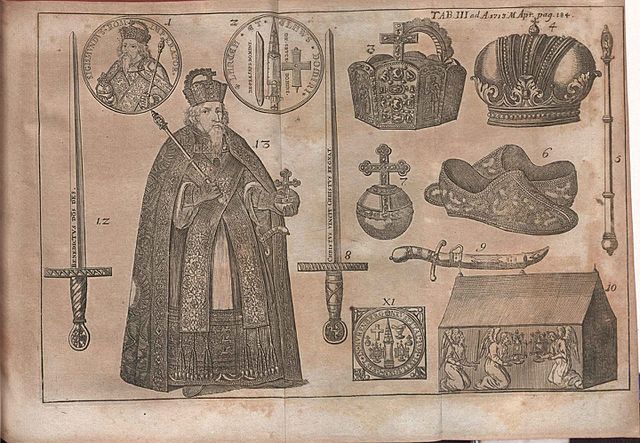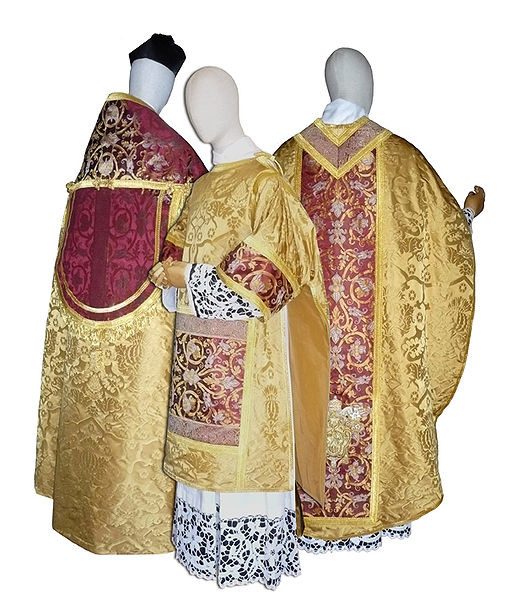The pallium is an ecclesiastical vestment in the Catholic Church, originally peculiar to the Pope, but for many centuries bestowed by the Holy See upon metropolitans and primates as a symbol of their conferred jurisdictional authorities, and still remains a papal emblem.
The pallium of Pope John XXIII, which is the current design, displayed in the museum of the Archdiocese of Gniezno
Pope Innocent III depicted wearing the pallium around the breast in a fresco at the Sacro Speco Cloister
Raban Maur (left), Alcuin (middle) and Archbishop Otgar of Mainz (right), wearing the pallium. From a 9th-century manuscript.
Gregory I dictating, from a 10th-century manuscript (vestments include a pallium)
Vestments are liturgical garments and articles associated primarily with the Christian religion, especially by Eastern Churches, Catholics, Lutherans, and Anglicans. Many other groups also make use of liturgical garments; among the Reformed (Calvinist) Churches this was a point of controversy in the Protestant Reformation and sometimes since, in particular during the ritualist controversies in the Church of England in the 19th century.
Clergy of various ranks in vestments at a Mass according to the Neo-Gallican Rite of Versailles Elevation of the chalice.
Illustration of liturgical garments from Acta Eruditorum, 1713
Ornate vestments which are used by the Catholic clergy: A chasuble, dalmatic, cope, and a biretta
Gold-embroidered epitrachilion (stole) dating from 1600, in the Benaki Museum, Athens

